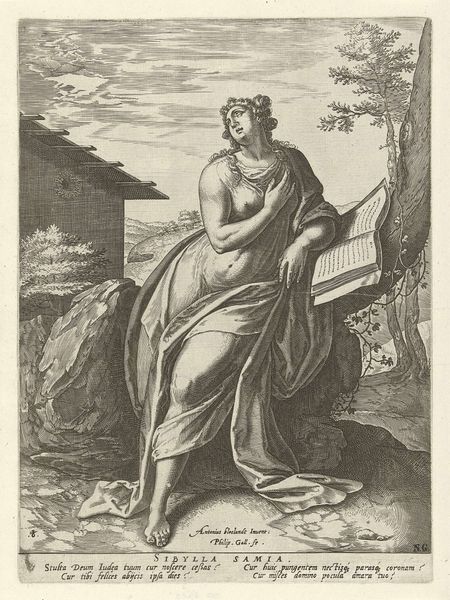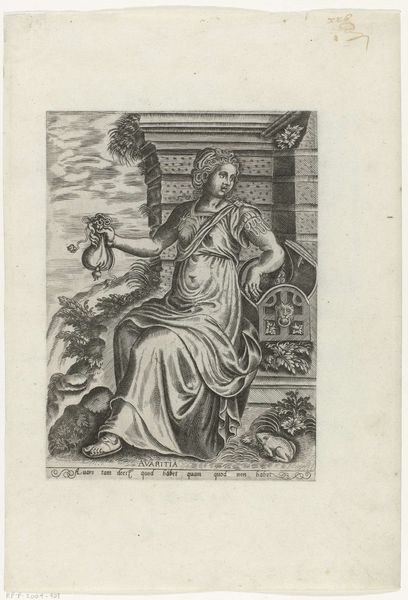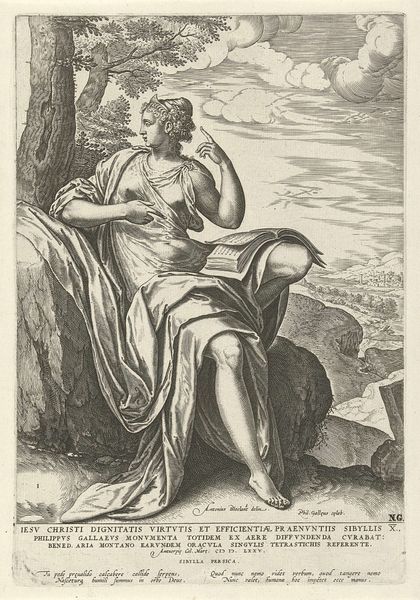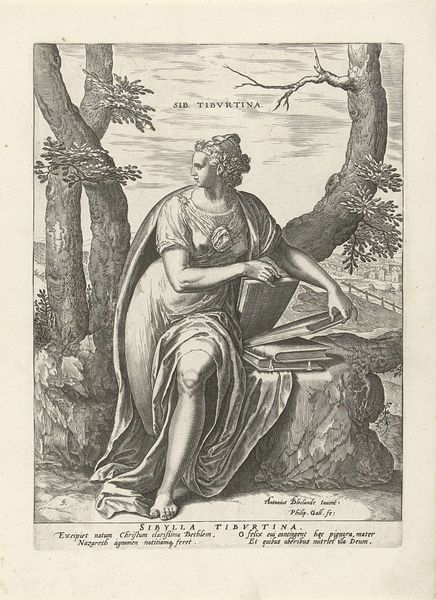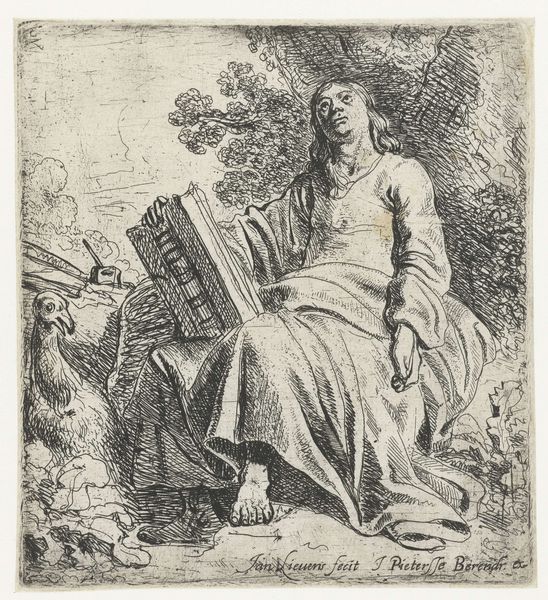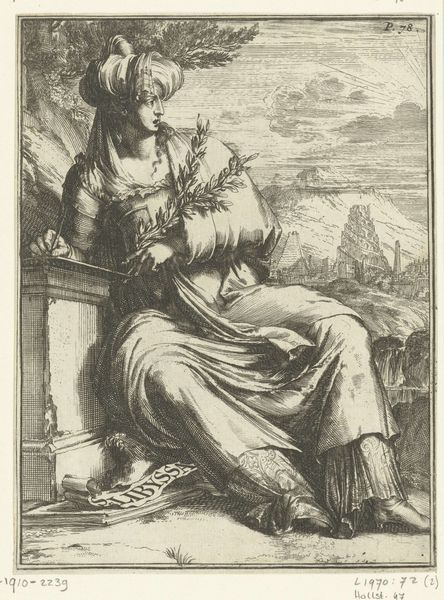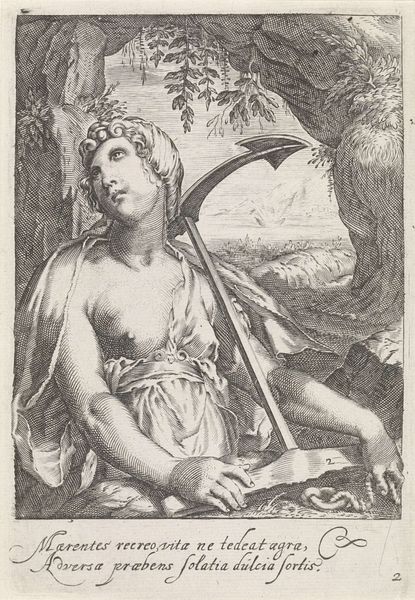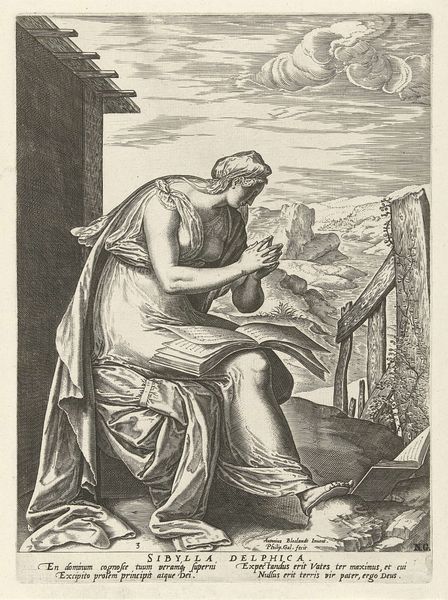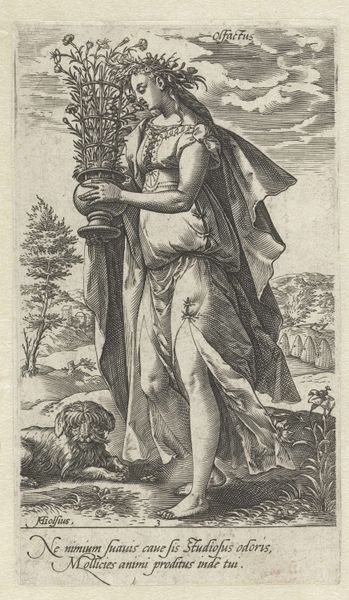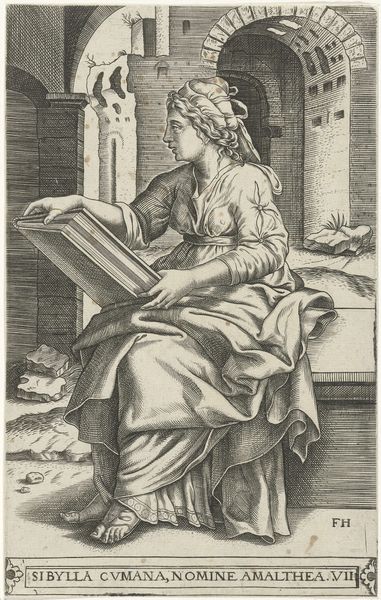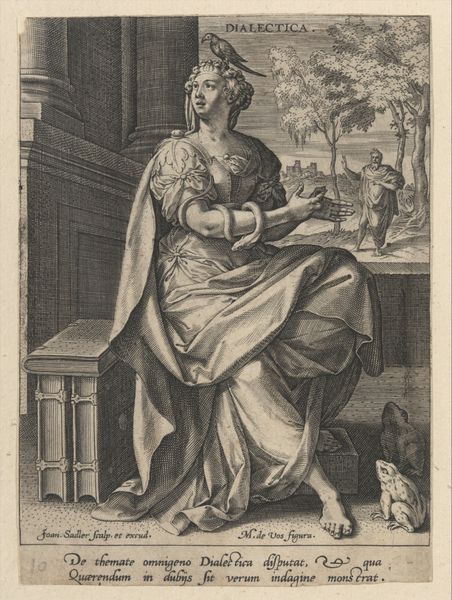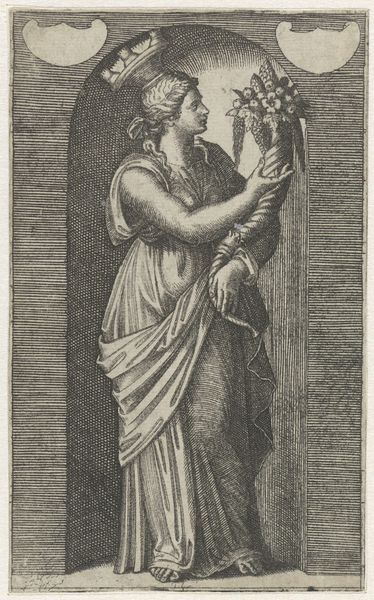
print, engraving
#
portrait
# print
#
mannerism
#
figuration
#
history-painting
#
engraving
Dimensions: width 209 mm, height 291 mm
Copyright: Rijks Museum: Open Domain
This print of the Erythraean Sibyl was made by Philips Galle in the late 16th century. It’s a fascinating example of how the detailed craft of engraving was used to reproduce images and disseminate ideas in early modern Europe. Look closely, and you can see how Galle used a tool called a burin to carve lines into a copper plate. The ink settles into these grooves, and when pressed onto paper, it creates a mirror image of the design. The cross-hatching gives the print depth and shadow, defining the form of the Sibyl and her drapery. But beyond the technical skill, consider the social context. Printmaking at this time was an industry. Galle wasn’t just an artist; he was an entrepreneur, running a workshop that produced and distributed prints on a commercial scale. The engraving medium itself allowed for the mass production and distribution of imagery, and this print, therefore, speaks to the rise of capitalism and the commodification of art.
Comments
No comments
Be the first to comment and join the conversation on the ultimate creative platform.
